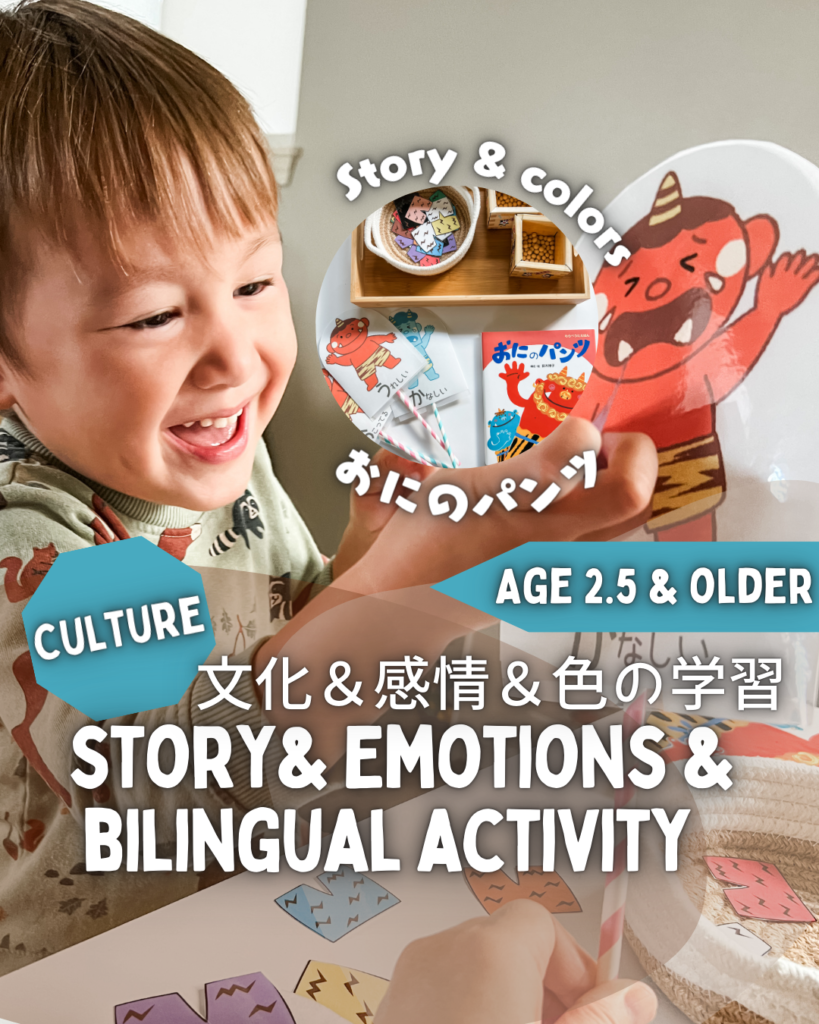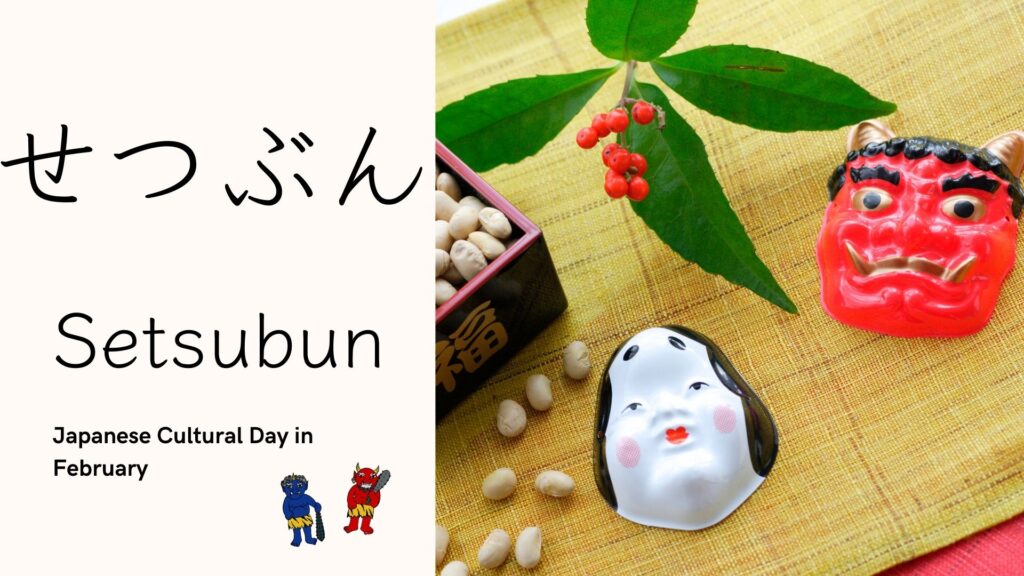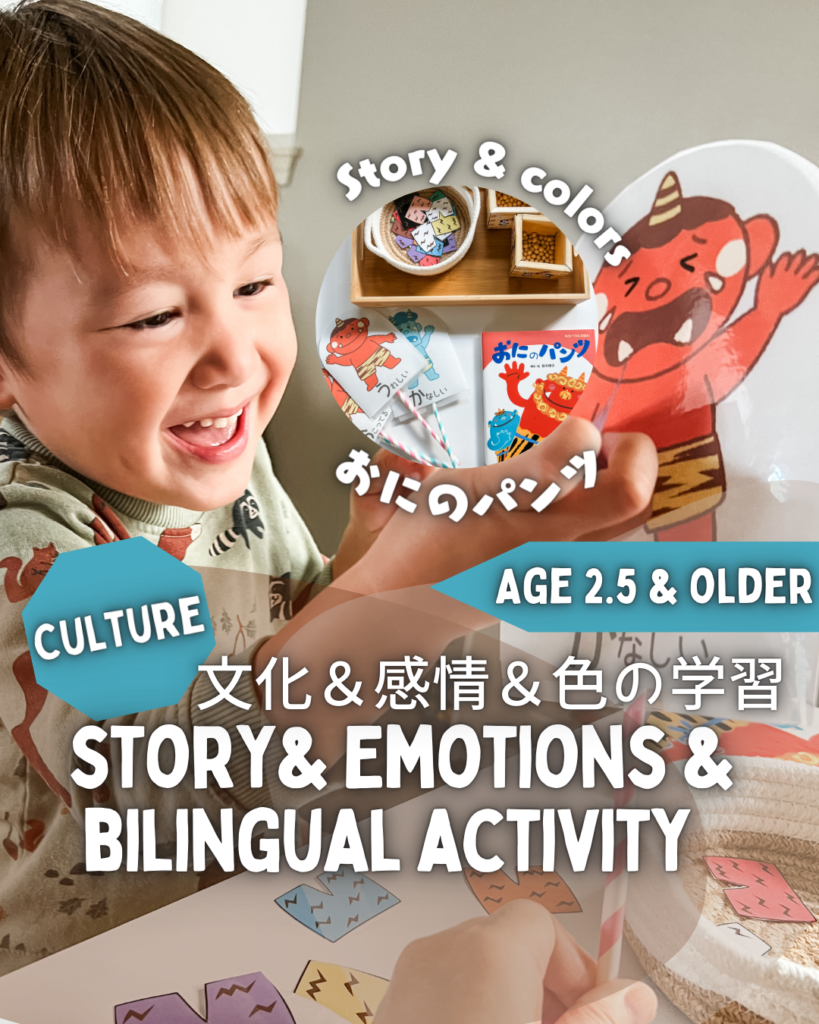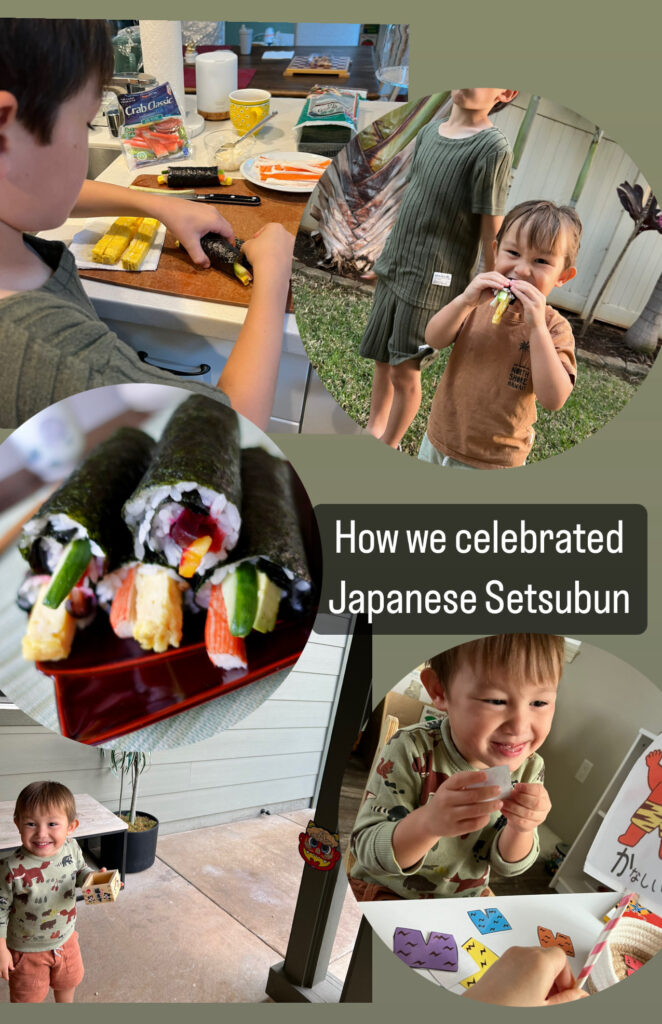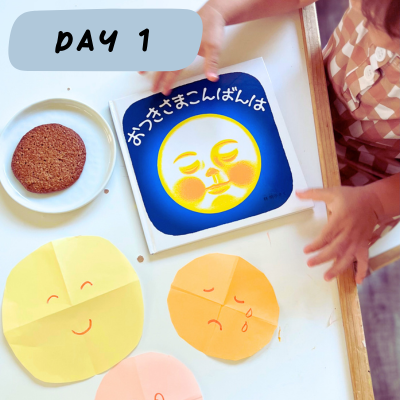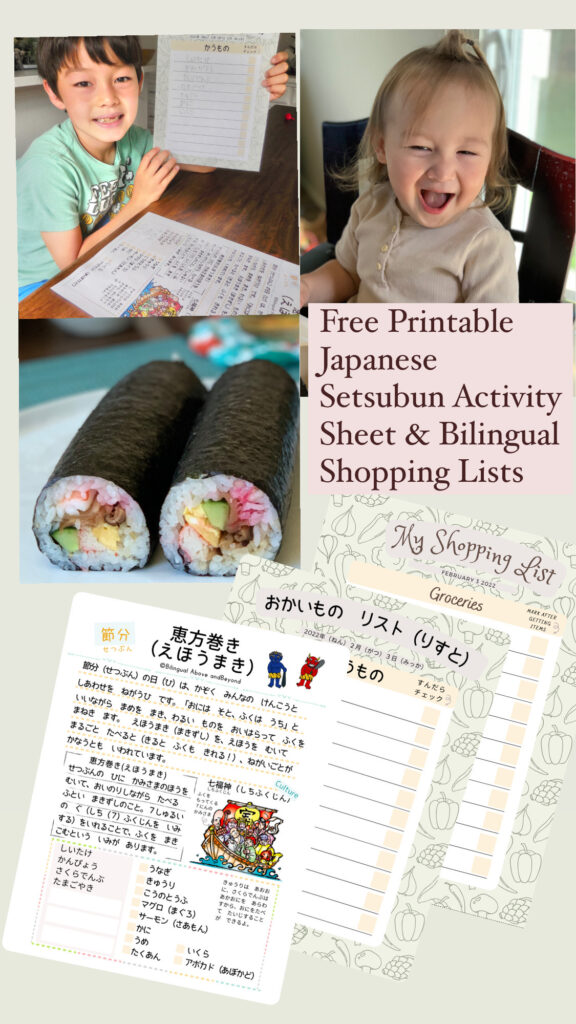Setsubun is the day before the beginning of spring, which is held in February in Japan. Families gather and pray for their family members’ good health and happiness for the year on this day. Main cultural practices include mamemaki, bean throwing rituals to drive away ogres which represent bad luck and bring good luck into a house and eating ehomaki, thick sushi rolls, facing a good-luck direction of the year.
Day 1
Pretend Play with Ogre Clothes-Changing Puppets
- Listen to a song, sing along with a songbook, and enjoy pretend play with ogre underwear-changing puppets, expressing desires for different colors and sizes with strong support from gestures, visuals, or onomatopoeia.
- Engage in a fun, affective pretend play to provide children with joyful, ample language input to later produce two- or three-word speech!
- Enhance cultural relevance learning about Setsubun.
Day 2
Pretend Play with Ogre Clothes-Changing Puppets
- Instead of a songbook, have a learner watch an interactive reflection video and respond to the questions independently.
- Develop cultural knowledge and perspectives through learning about Setsubun.
- Repeat Day 1 pretend play activity
Day 3
Same Pretend Play & Setsubun Bean-Throwing Tradition
- Repeat Day 1 lesson. Have a learner take ownership of making a request, using the names of colors and sizes in two- or three-word phrases during the pretend play, with strong support from gestures, visuals, or onomatopoeia.
Reflection: Have a learner experience bean throwing tradition of Setsubun, using the image of ogres.
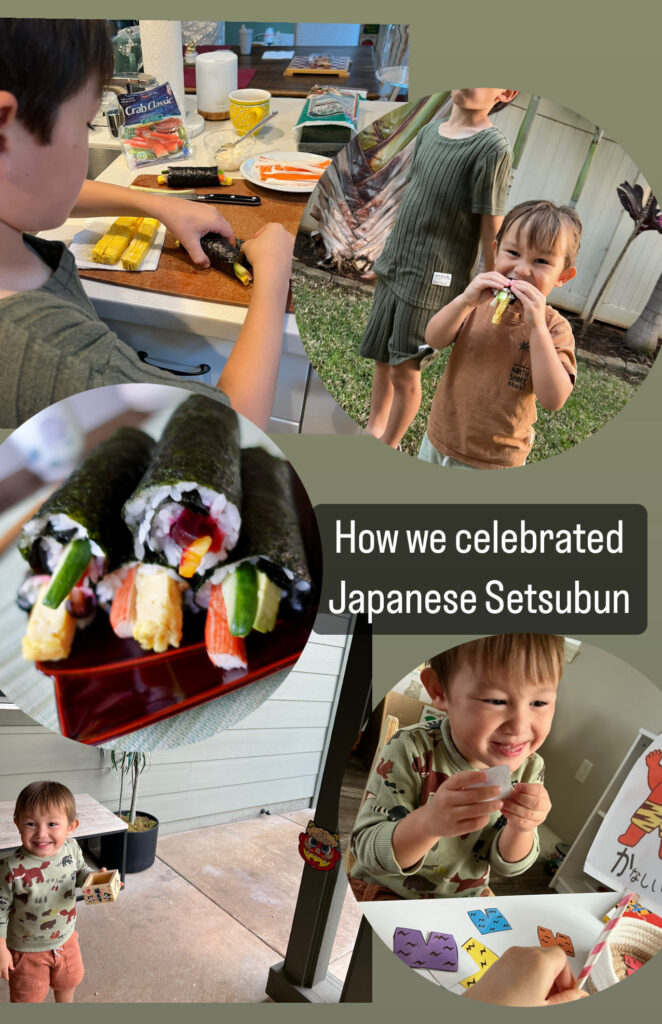

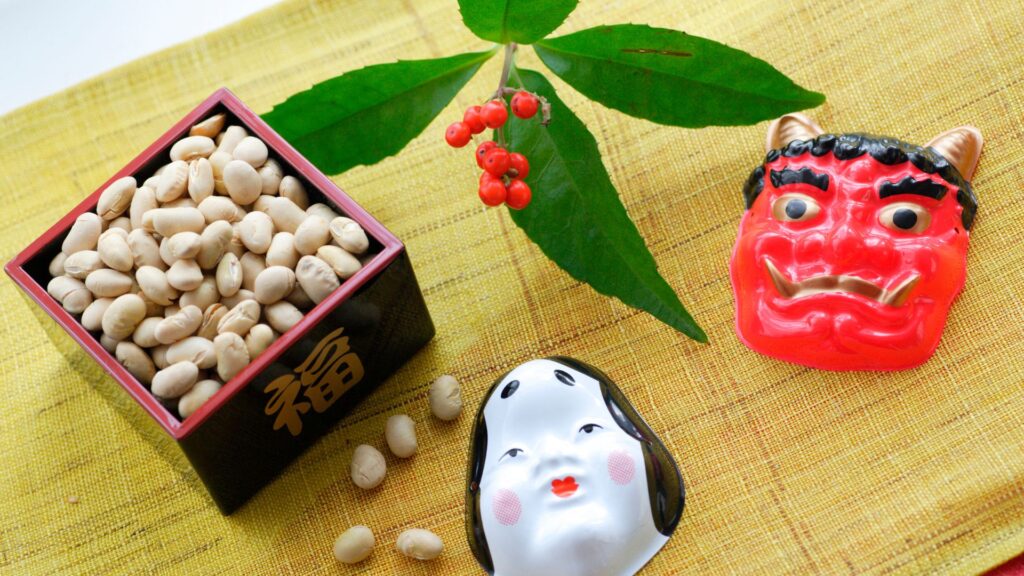
Engage a learner with a song and visuals:
- Show an image of Setsubun and introduce it saying “we’ll celebrate Setsubun and throw beans at ogres to drive away bad luck”.
- As a pre-listening question, ask the learner to find out what color underwear the ogres are wearing.
- Have the learners watch the above song “Oni No Pantsu (Ogre’s underwear)” , a well-known, silly, cute Japanese rhymes for Setsubun. After watching the video, scaffold the learner in expressing the colors of ogres’ underwear. They’re “kiiro (yellow)” or/and “chairo (brown)”.
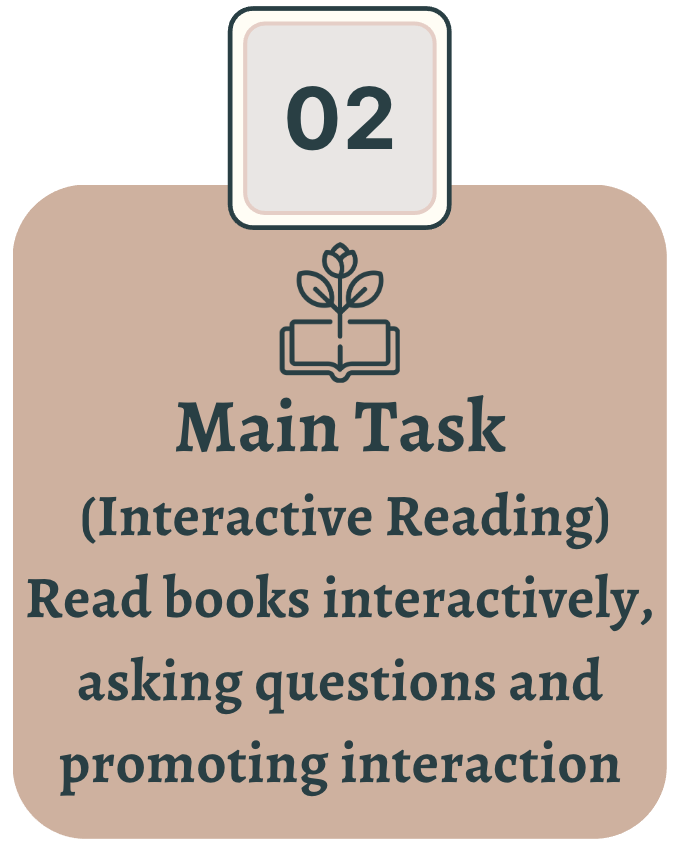
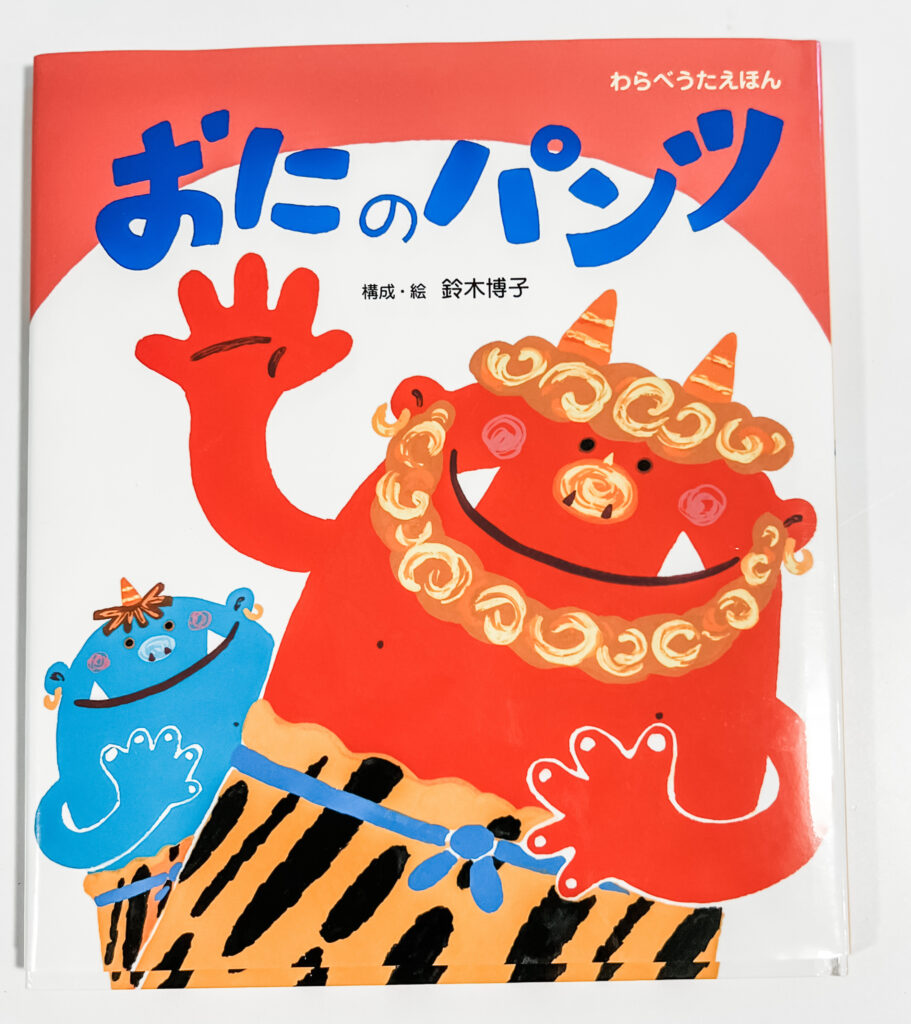
This book, おにのパンツ (Ogre’s Underwear), is a songbook featuring the same song used in the pre-task activity above. It’s a silly, cute Japanese nursery rhyme loved by children. Read it interactively, engaging in back-and-forth conversations with a child.
For the book information on Amazon➤
If there is no access to the book, use this YouTube video➤
Sing along with the songbook:
- Ask a pre-reading question, “Can you find out if a mouse is wearing big or small underwear? おおきい、ちいさいパンツ(big or small underwear)?
- Sing the song along with the songbook and have the learner answer the pre-reading question.
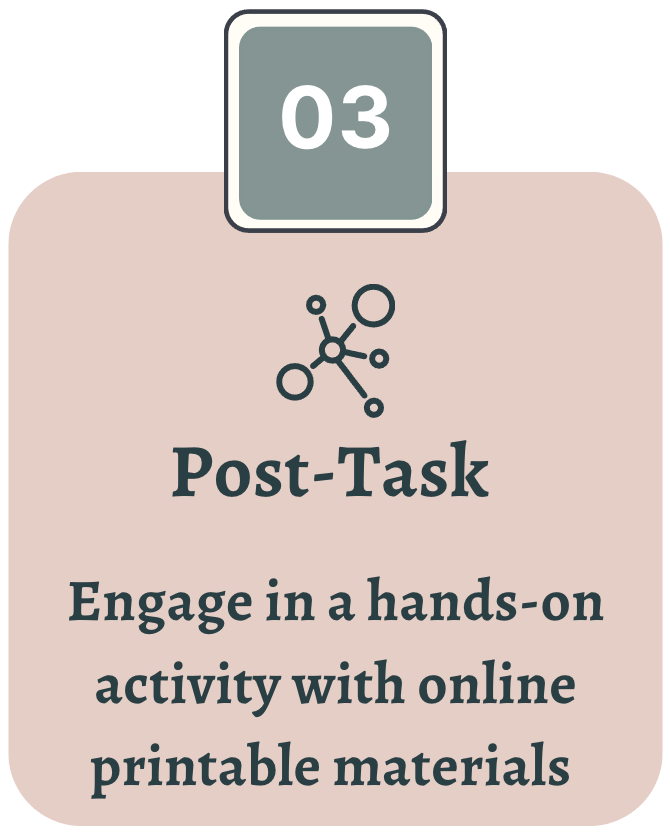
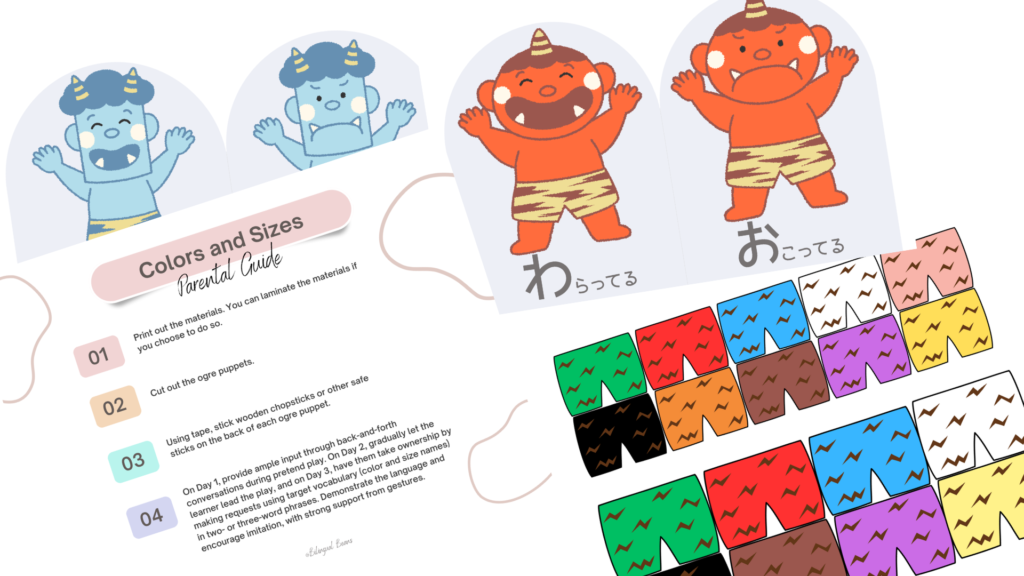
Enjoy pretend play using puppets created from online printable materials! A sad ogre puppet asks to be changed into big/small, colored pants, and he becomes happy after getting the right-sized, right-colored pants, as you direct.
- As you direct, demonstrate the language and encourage imitation of the adult’s speech, using two-word phrases: e.g. “おおきくて あかい パンツ (ookikute akai pantsu) or あかくて おおきい パンツ (akakute ookii pantsu), meaning a big, red underwear”, with the strong help of gestures or visuals.
- Instead of rushing children to produce words, have the learner enjoy participating in pretend play and receive tons of ample enjoyable input, promoting back-and-forth conversations.
Click below to see the activity video on Instagram↴
A sample conversation we had for this post-reading activity:
Ogre (an adult): Pun pun pu, okotteru (I’m mad). Ookii, shiroi/ookikute shiroi pants hakitai/chodai (Please give me big white underwear).
Child: Okii, shiroi pantsu? Ookii, shiroi, iru (Do you want big white underwear)?
Ogre (an adult): Un, ookii shiroi/ookikute shiroi pantsu chodai/iru). (yes, big white underwear, please).
Ogre (an adult): Arigato (thank you)! Do this after getting the right pants and flipping the puppet to the happy side of an ogre.
As reflection, enjoy the following activities:
Using realia, ask learners questions about colors and sizes (e.g., items in the house or classroom) and have them identify different colors and sizes by pointing at pictures or illustrations.

Watch the same song video from Day 1 and ask reflection questions to remind the learner of cultural products and practices of Setsubun, e.g. “What do we throw at ogres on this day?/Do we throw beans to wish for good or bad luck?”
- Tips: On the second or third day of using the same song, shift the focus from providing input to encouraging the learners to produce language by singing autonomously, with or without an instrument, and with or without the video.

Watch the presentation video about the New Year’s Holiday and have the learner respond to it interactively while watching.
- Perspectives📝: They will learn about the belief that everyone has both positive and negative ‘ogres’ (lazy, night-owl, angry, etc.) within themselves.

Repeat Day 1 pretend play. Most importantly, enjoy encouraging conversation with the child, using the target vocabulary and phrases through child-led pretend play.
As reflection, enjoy the following activities:
Read a story about items with different colors and sizes, and have learners point to them as you mention them.

Repeat Day 1 lesson but implement the lesson in a different way as explained below.
- Use the same image and ask reflection questions to remind the learners of cultural perspectives behind the bean throwing tradition, e.g. “Why do we throw beans at ogres on this day (Doshite onini mameo nageruno) ?/ Do you have a happy or sad ogre in yourself today (Kyowa, minnano kokorono nakani ureshii oniga iru, soretomo kanashii oniga iru)?”.
- Use the same song video, but this time, encourage the learner to sing along with it.

Read the same book interactively. How can we lead interactive reading? You can ask questions or offer commentary to promote the child’s comprehension and curiosity. Here are some example comprehension questions you can ask:
- “What color are ogres’ underwear (Onino pantsu wa nani iro)?”
- “Does the underwear last for five or ten years (Onino pantsu wa gonen soretomo jyunen yaburenai)?”
- “Is ogres’ underwear strong or weak (Onino pantsu wa tsuyoi, soretomo yowai)?”

Repeat the pretend play from Day 1 and Day 2. This time, encourage the learner to take ownership of making requests using two- or three-word phrases with colors and sizes, supported by gestures, visuals, or onomatopoeia.
As reflection, enjoy the following activities:
- Have a learner watch the same presentation video and respond to the questions independently. Assess how they can express the target vocabulary and phrases interactively while watching. Click the button to download the assessment rubrics.
2. Visit and participate in Setsubun cultural events to interact with community members, if available.
3. Have a learner experience Setsubun bean-throwing tradition, using the below ogre images.
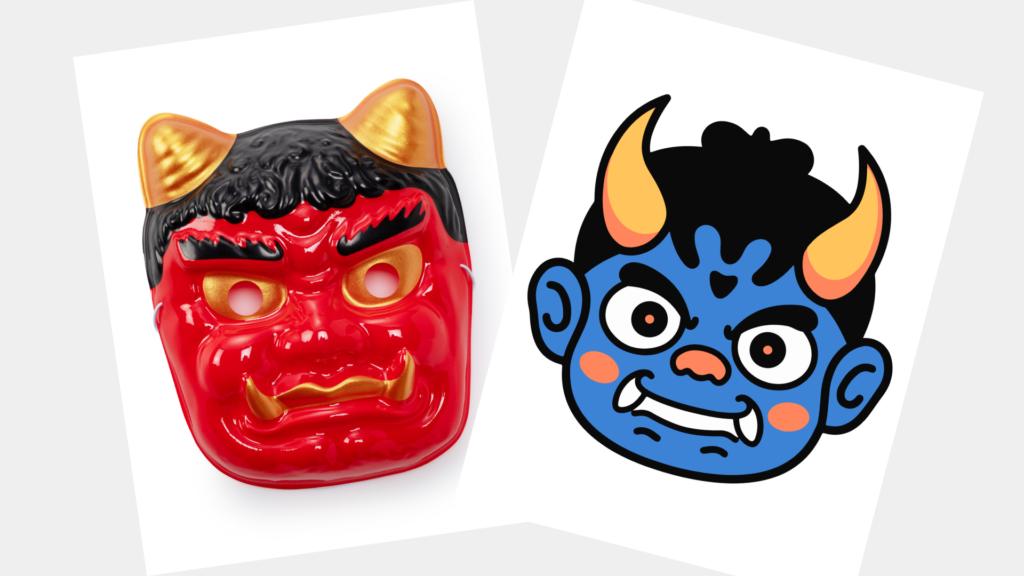
Click below to see the bean-throwing activity on YouTube↴

